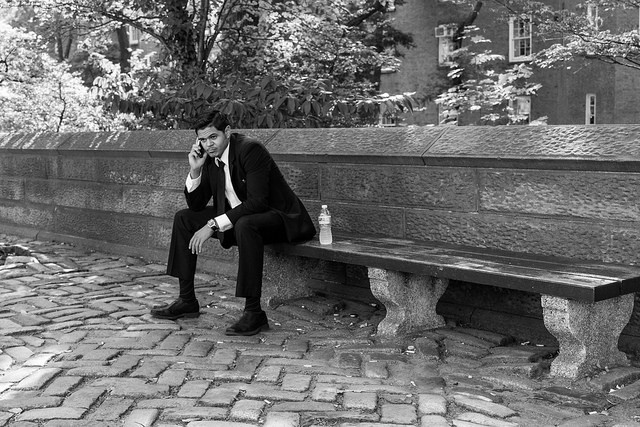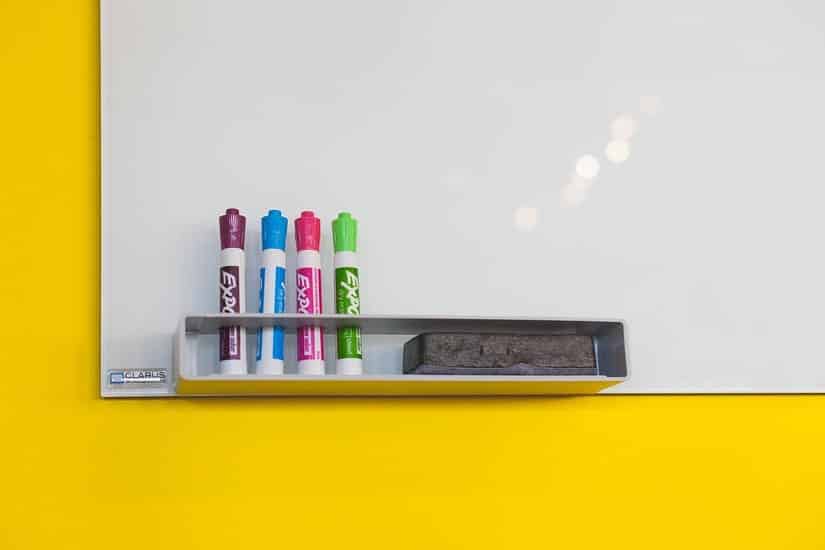This article was last updated on December 29, 2015
Note: This is part of a larger series on how to be more confident. Part 1 is here.
Today, I want to talk about the three distinct types of confidence and how to build confidence in each area. Whether that’s at work, with your friends, in romantic life, amongst superiors, it doesn’t matter. If you want to know how to be more confident, you need to identify the area you in which are weakest and get to work.
So let’s start with the most common type…
How To Be More Confident: 3 Pillars Of Unshakable Self Confidence
Type 1: Experiential Confidence
In college, I was terrified of chatting up strangers, especially women. I had two serious crushes…who I obviously never attempted to talk to. The thought of walking up to them out of the blue was enough to make me sweat.
Nearly 10 years later, I have a hard time remembering what I was so worried about. Start a conversation with a stranger? I’m off before you can even dare me.
How? Well, a big reason is that I have experience. I pushed through those first excruciating conversations and have since spoken to thousands of people. It’s familiar now. I feel no pressure.
You’ve experienced the same in your own life. The first time you got on the highway, were you freaked out? The first time cars whizzed past me at 80mph, I gripped the wheel like a maniac. It got my heart beating like I’d been running wind sprints.
But after a while, we all adjust. It’s not that driving on the highway is necessarily any safer. Our bodies just learn that it won’t kill us.
The kind of confidence you feel in a specific environment, whether it’s driving your car, presenting at work, or talking to women is experiential confidence. We’ve all developed it in some aspect of our lives.
All you have to do to earn it is complete some task successfully. You even build that confidence when you fail. If (and this is important) you don’t treat failure as permanent.
So take little old college me for example. If I’d had an awkward encounter with a girl and afterwards I’d told myself, “You ALWAYS screw it up. You are such a weirdo!” I might not have built experiential confidence.
But I didn’t. My thought process was more like: “Well, that sucked. Hopefully you learned something. At least you’re still breathing!” Admittedly, not the best self-talk, but good enough to gain experiential confidence from each failure. Be thankful for the learning opportunity, thankful that you are still alive, and your failures will contribute to your confidence.
So the recipe for experiential confidence is simple. Ask yourself “Statistically speaking, is this likely to lead to physical harm?” If the answer is “No, I probably won’t suffer physical injury,” do it. Even if you’re afraid. Because guess what? Doing something when you’re afraid, is the best way to build experiential confidence for next time.
Type 2: Emotional Confidence
Emotional confidence is the kind of confidence you “turn on.” Let me explain…
When I was 23, I had never asked the President of my company for permission to work remotely 200 miles away from the main office. I had no experiential confidence to draw on. I felt nervous, but I needed to present a confident front.
How did I do it?
Beforehand, I mentally prepared. Mental preparation is critical because it gives you the benefit of experiential confidence – even if it’s imagined. Specifically, I planned how I’d present my case, brainstormed how he might respond, and planned how I’d handle each of his responses. Like a little “If…then” decision tree. It kept me from being caught off guard and helped me maintain my composure. I can’t recommend this tactic enough for big conversations.
More importantly though, I tapped into emotional confidence by controlling my body. I have said it before, and I will say it again. Control your body and you control your emotions. Lose control, and your emotions run all over you.
I walked in, shook his hand, and smiled — even though I felt jitters. I resisted the unyielding urge to cross my arms. Instead I pulled my shoulders back and opened up my posture. I wanted to blurt my whole spiel out at once to get it over with. But I didn’t. I spoke at my normal pace.
I was shaking when I sat down. But just a few minutes into the conversation, it subsided. Even though the conversation hadn’t gotten any easier. By the end, I didn’t have to resist a racing heart or feign confidence. I had become confident.
That’s emotional confidence.
Emotional confidence is great for those situations you can see coming, like big speeches, difficult conversations, or high-pressure performances. It is not limited to just one domain of expertise like experiential confidence.
The trouble with emotional confidence is that it isn’t automatic. You have to turn it on. And you might not have time or space to when someone is in your face or you’re blindsided.
So what do you do if you’ve never experienced a difficult situation AND you don’t have time to steel yourself. How to be confident then? How is it that those supreme badasses seem to handle ANYTHING that comes their way?
Well, it’s because they have the third kind of confidence…
Type 3: Self-Esteem
This is the deepest level. This is the confidence that just is.
Why self-esteem? Why not huge muscles or money or anything else that gives a concrete, real-world advantage?
Because confidence in the modern era isn’t about survival. There are decorated war veterans, men who ran into bullet fire, who lack the confidence to strike up conversation with strangers. Confidence today is not often threatened by broken bones. It’s threatened by a broken identity.
What if I talked to them and they ignored me? What if she rejected me? What would people think of me?
They – ignore – Me, She – reject – me, People – think – me. That’s low self-esteem’s entire identity: “What do other people think of me?”
High self-esteem is the ultimate level of confidence because with high self-esteem, your identity is self-generated. It’s not based on what others think of you. It is about upholding your own internal code. When you tie your identity to living up to your own standards, the only person who can harm your identity is you. Which means you’re safe everywhere, no matter who is watching.
That’s how some people know how to be confident all the time. Because their identity is never at stake. As long as they live up to their own standards, no public humiliation, rejection, or awkwardness can harm who they are.
What are the standards that high self-esteem individuals tend to have? There are many, but the core usually includes:
- I try my best
- I express myself fully
- I take responsibility for my own happiness
- I do what’s right, not what is easy
If I’d had higher self-esteem in college, my thought process would have looked like this:
“Some stranger thinks I am awkward. That’s a bummer. I like her and wish we could have gone on a date. But the important thing is that I tried. I lived up to my own standards. So it’s all good.”
As long as your identity is “People like me” or “People look up to me” or “I am cool,” you are at the mercy of strangers’ opinions. It’s a terrible way to live. Identify with this: “I try my best to do what is right.”
How do you know what’s right in social situations? It’s pretty simple.
- Do what scares you
- Do your best
Recap: How To Be More Confident By Using All Three Types
Focus on what is familiar – Familiarity breeds comfort. So purposefully put yourself in situations that will give you a sense of familiarity in situations that may seem unfamiliar. Scope out the location of a big meeting or run through an important conversation in your head. If you don’t have time, ask yourself how your current situation is similar to something you’ve done successfully before.
Take emotional control with your body – Get open and get louder. Two minutes of speaking loudly, gesticulating, smiling, and breathing into your belly is enough to snap a bad pattern.
Make this your identity “I am the person who does what is right” – From there, no failure, humiliation or rejection, no matter how profound can touch your identity.
The Confidence Cycle
One last thing. Confidence is a cycle. You might find yourself in various cycles in different areas of your life. You could be in an upward spiral at work (doing good work, being praised, feeling confident, taking risks and having them pay off) and a downward spiral in your love life (feeling nervous, communicating neediness, being rejected, feeling less confident). Or vice versa. Or anything.
If you want to know how to be more confident in the most simplistic way, my advice to you is this:
Start. The nature of a cycle is that starting is the hardest part. Momentum takes over after that. So wherever you aren’t where you want to be, take something small and do it now.
Sign up for an improv comedy class, schedule a meeting with your boss, call the person you’ve been thinking about and invite them out.
It doesn’t matter how those things go. The most important thing you can do for your confidence is to get started. Right now.
I’ll go first. I’ll go first. I just calendared my first MMA class since injuring my shoulder. I’ve been hesitant to go in because I know I’ll be rusty. But I want to know how to defend myself, Which means starting back into MMA (and sucking at first).
Now your turn.
Tell me what you did in the comments ![]()
Photo sources: Adam B





